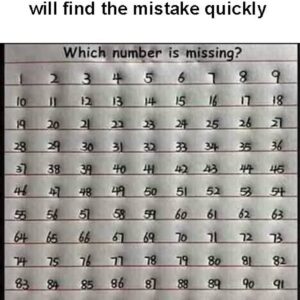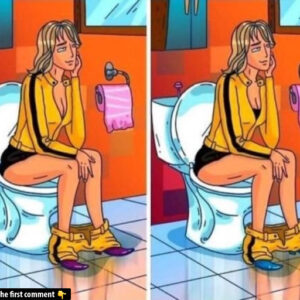Ready to give your brain a workout? In today’s challenge, we present a series of deceptively simple “addition” problems that hide a clever mathematical twist. If you think 7 + 7 always equals 14, think again! Study these examples, spot the hidden pattern, and see if you can determine the value of 8 + 6. Dive in, test your logic, and don’t forget to share your answer and thought process in the comments below!
Take the Challenge!
Imagine you stumble upon these equations:
- 7 + 7 = 98
- 3 + 5 = 24
- 2 + 3 = 10
Your immediate reaction might be that something’s wrong—until you recognize the pattern. Rather than dismissing these as typos, we invite you to think outside the box: what rule could turn 7 + 7 into 98? Once you crack it, you’ll be ready to solve the final mystery:
What is 8 + 6?
Video
Feeling stressed? Give these fun little brain teasers a go and clear your head!
Common Pitfalls: Why Solvers Go Astray
Even experienced puzzlers can stumble on this trick. Here are a few typical missteps:
- Defaulting to Standard Addition: Seeing “+” makes most of us add the numbers in the usual way, leading to 7 + 7 = 14.
- Trying Unrelated Operations: Some try subtraction, exponentiation, or concatenation (e.g., “7” next to “7” → 77), but those don’t match all examples.
- Ignoring Consistency Checks: After finding a rule that works for one example, failing to test it against the others often leads to a premature—and incorrect—conclusion.
To avoid these traps, adopt a systematic approach: observe, hypothesize, and then verify across every example.

Step‑by‑Step Guide: Discovering the Secret Rule
Follow these steps to unveil the hidden math:
Step 1: Inspect the First Example
- 7 + 7 = 98
- Plain addition gives 14; plain multiplication (7 × 7) gives 49; concatenation gives 77. None match 98.
Step 2: Consider a Combination
- Notice that (7 + 7) = 14, and 7 × 14 = 98. This suggests a rule:
- a + b → a × (a + b)
Step 3: Verify with the Second Example
- 3 + 5:
- (3 + 5) = 8
- 3 × 8 = 24 matches “3 + 5 = 24”
Step 4: Verify with the Third Example
2 + 3:
- (2 + 3) = 5
- 2 × 5 = 10 matches “2 + 3 = 10”
Having confirmed the pattern in all three cases, you can confidently apply it to the final puzzle:
Step 5: Solve for 8 + 6
- (8 + 6) = 14
- 8 × 14 = 112
So, 8 + 6 under this special rule equals 112.

Share Your Solution!
Did you spot the rule at first glance, or did it take a few tries? Leave a comment with your answer—112—and walk us through how you arrived at it. Love this kind of brain teaser? Explore more puzzles on our site to keep sharpening your logical thinking and problem‑solving skills. The more you challenge yourself, the sharper your mind becomes. Happy puzzling!



